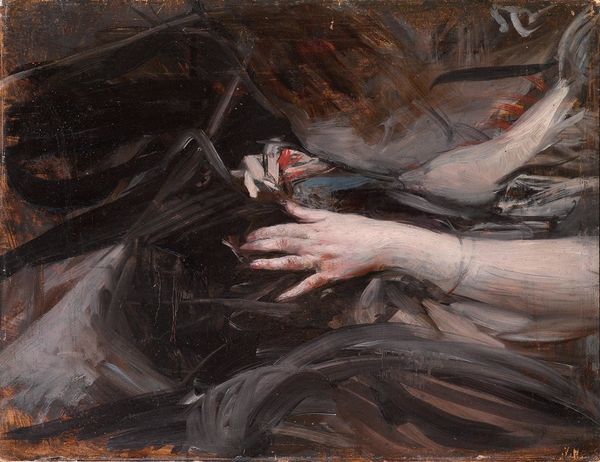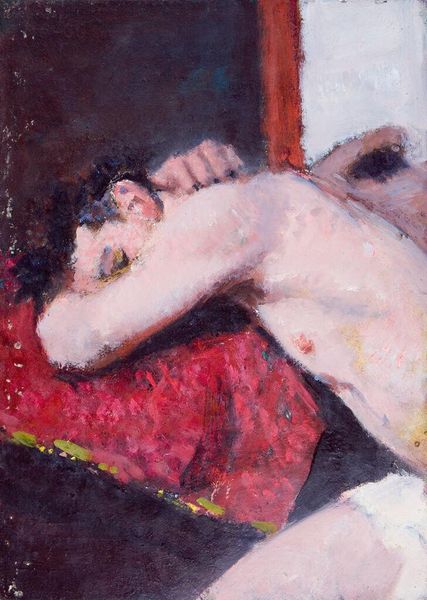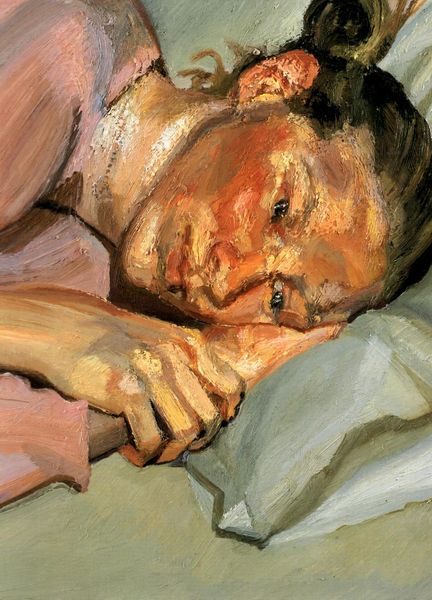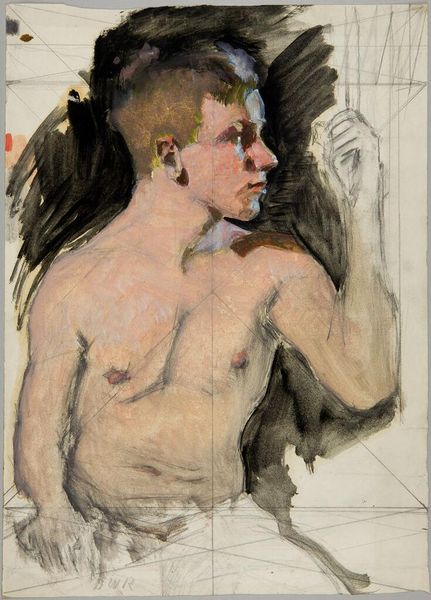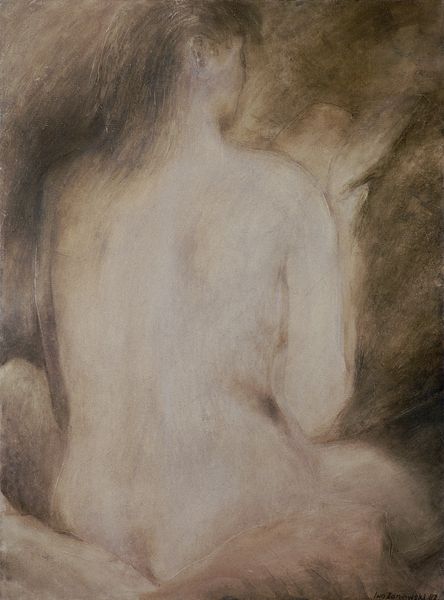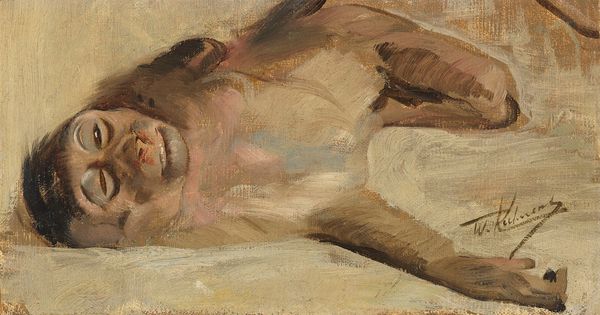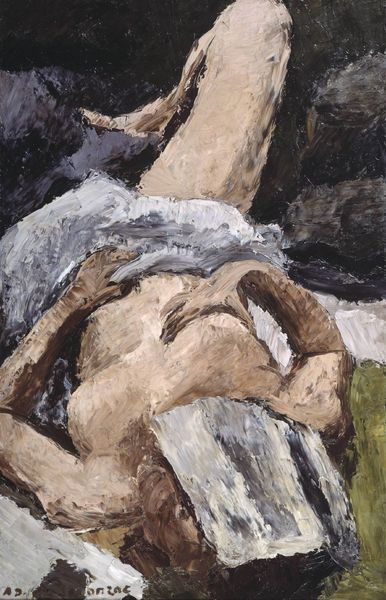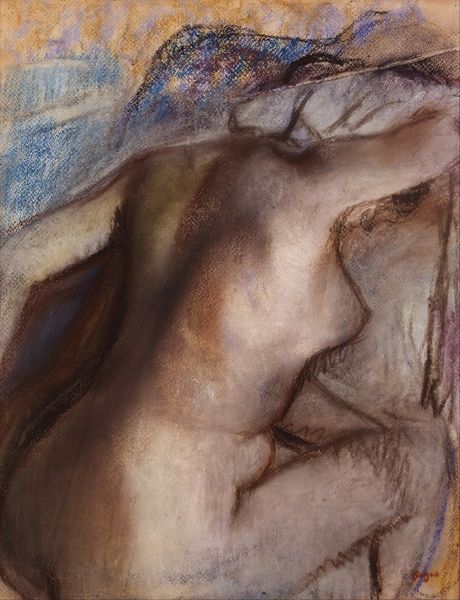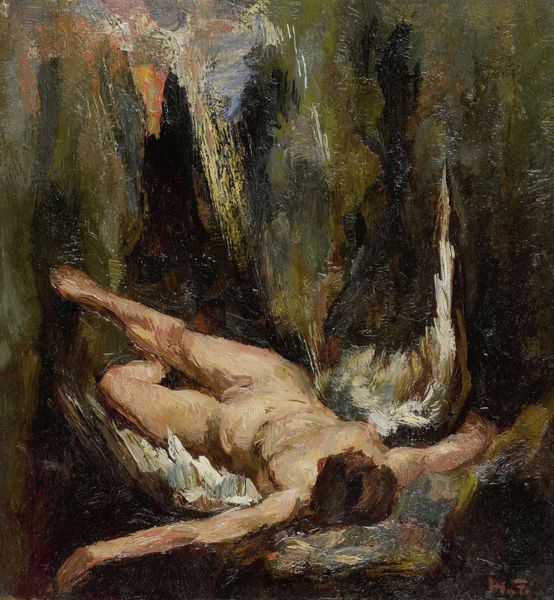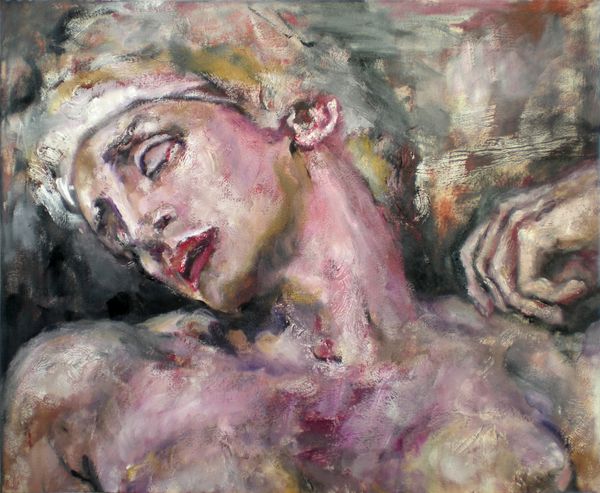
oil-paint
#
portrait
#
figurative
#
oil-paint
#
oil painting
#
history-painting
#
academic-art
#
nude
#
portrait art
Copyright: Public Domain: Artvee
Editor: This is Henryk Siemiradzki's "Study of the Bust of a Naked Youth with a Vase," painted around 1880, in oil. I am struck by its sketch-like quality; you can almost feel the artist working. What jumps out at you when you look at it? Curator: Well, I immediately consider the labor involved. This is a "study," so it’s not intended as a finished product for consumption. Instead, it reveals the process, the artist honing his skills in representing the male nude, a crucial skill for Academic art sold for high price later on. Editor: Interesting, I was focused on the incompleteness as an aesthetic choice. Curator: Incompleteness also reveals the materials at play. Look at the layering of the oil paint; you see the raw canvas showing through and the tentative application around the face, which itself is undefined. The vase seems similarly unresolved. We also must consider the model's labor - posing for an extended period. His physicality becomes a commodity. Editor: That makes me think about the value we place on "finished" art versus studies like this one. Curator: Exactly! The study exposes the means of production, unsettling the mystique surrounding high art. Was Siemiradzki attempting to democratize access to his art or simply create a cost-effective means of artistic development, through material limitations? What social pressures do you imagine impacting these decisions? Editor: I hadn’t considered that at all! Seeing the social and material contexts helps to reveal this is not just a simple study. Curator: Precisely. It makes one ponder what materials are selected, why they're selected and who ultimately profits.
Comments
No comments
Be the first to comment and join the conversation on the ultimate creative platform.
